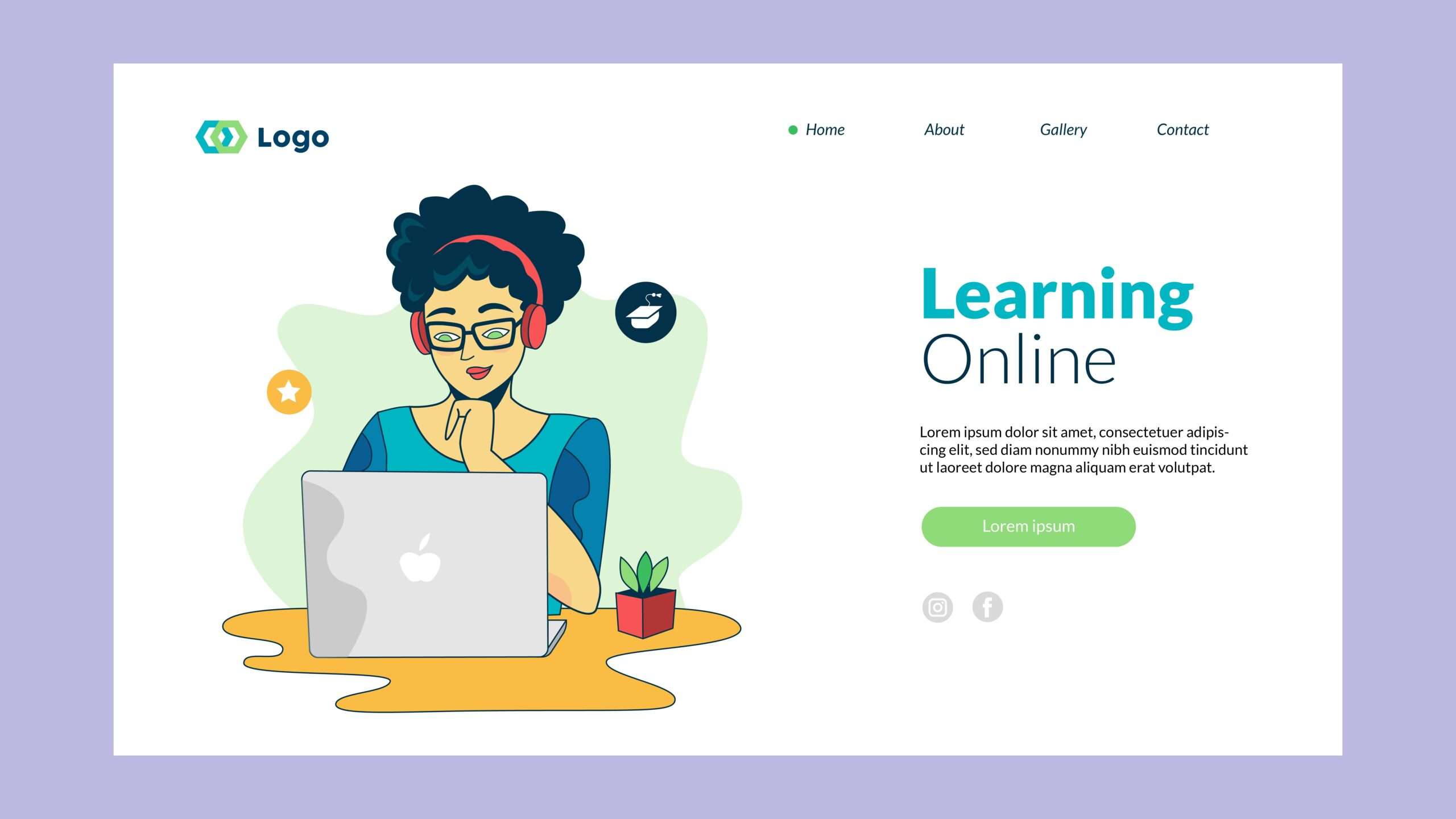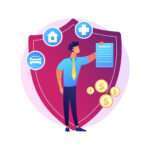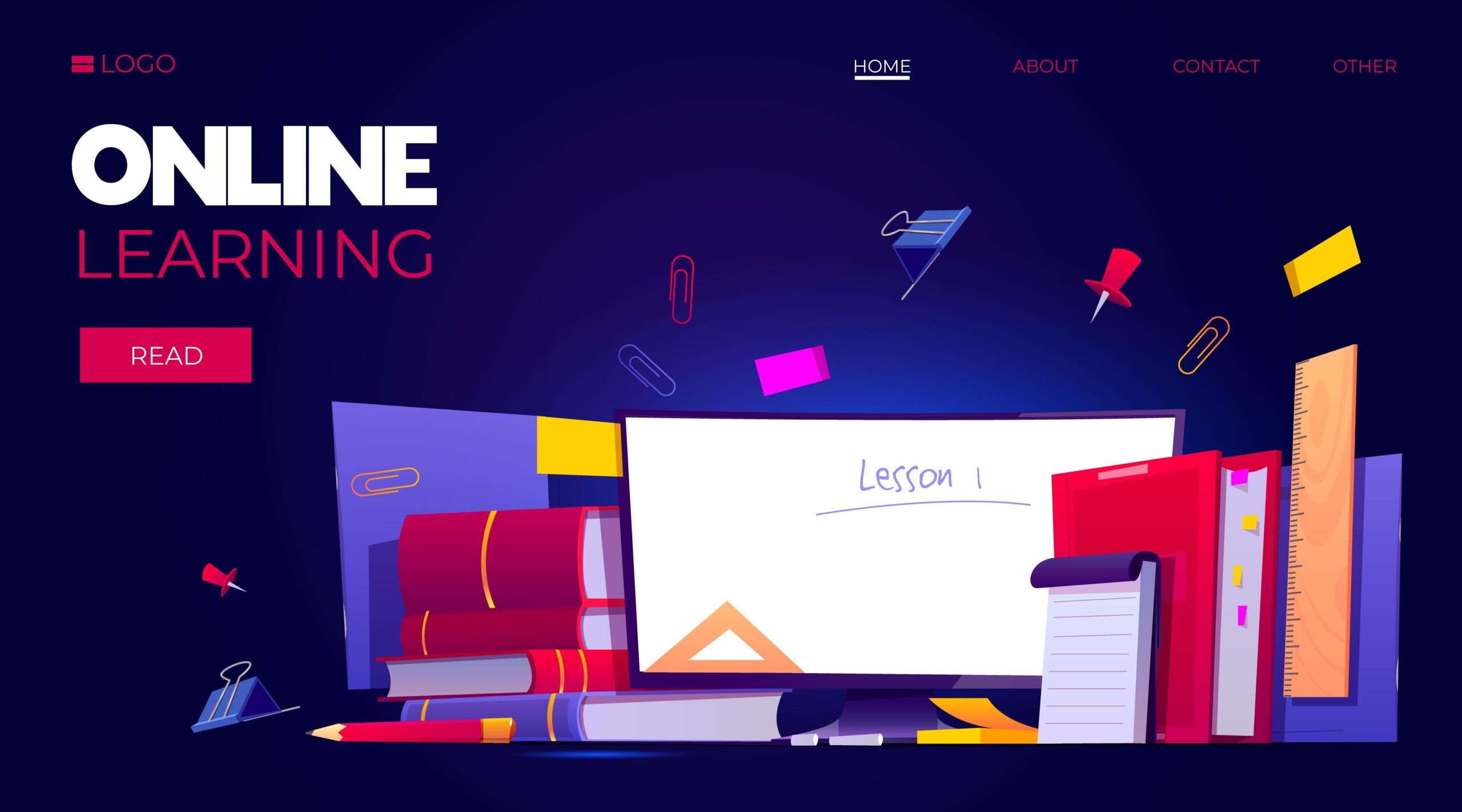Slug: choosing the right online or traditional learning course
The Changing Landscape: Why It’s More Important Than Ever to Choose Your Educational Path
For a long time, the path of education was clear: primary school, secondary school, and then, for many people, college or vocational training in a real classroom. This model is still important, but the digital age, which has been sped up by events around the world, has completely changed how people can get information. There are so many choices available today that it can be hard to choose, but these choices also offer amazing chances.
The traditional classroom, with its set schedules, physical presence, and direct interaction with the teacher, has always been the best way to learn. But the rise of digital technologies has led to the rise of a strong competitor: online learning. This includes everything from self-paced courses and live virtual classrooms to blended models that mix the two.
It’s not that one type of learning is better than the other when it comes to online vs. traditional learning. It’s about finding what works best for you, your learning style, and your life goals. Finding the “right course of action” is very personal and requires a lot of self-reflection, strategic planning, and knowledge of what each mode really offers in 2025 and beyond.
Unpacking the Pillars: Online Learning in 2025
In the past, online learning was mostly made up of static PDFs and pre-recorded lectures. Now, it’s much more advanced. It uses the latest technology to make experiences that are dynamic, interactive, and often very personal.
Benefits of Learning Online in 2025
There is no denying the appeal of online learning, which is based on benefits that modern students can relate to.
- Unmatched ease and flexibility:
Many people say that this is the main reason students choose to learn online. 72% of students prefer online learning in 2025 because they can set their own schedules. You can get to your course materials, lectures, and assignments from anywhere with an internet connection, like your home office in Kigali, a coffee shop, or even on a business trip. This lets you fit your studies around your job, family, or other personal obligations.
- Cost-Effectiveness:
Online programs usually cost less than traditional on-campus programs. You save a lot more than just tuition on things like commuting, housing, campus fees, and sometimes even physical textbooks. This can save a lot of money, which makes it easier for people to get a good education.
- Access to a wide range of courses and schools around the world:
There are no longer any geographical barriers. No matter where you live, you can sign up for specialized courses or degree programs at some of the best universities in the world. This opens up new academic opportunities for you and lets you pursue niche interests that might not be available where you live.
- Learning that is tailored to you and at your own pace:
Students can learn at their own pace on many online platforms. They can go back to difficult topics when they need to or speed through material they already know. Adaptive learning systems and AI are getting more advanced. They can now customize content, activities, and feedback to fit each person’s learning style and speed. This personalization can help people understand things better and remember them better.
DigitalDefynd has a list of 15 reasons why online learning is the future of education.
- Improved development of digital and tech skills:
Using different digital tools, working together online, and learning on online learning platforms all help you naturally improve your tech skills. These skills are in high demand in today’s job market, and they will help you get ready for work environments where digital communication and working together from a distance are important.
- Many different and interesting ways to learn:
Many online courses use a lot of different types of multimedia, such as videos, interactive quizzes, simulations, virtual labs, games, and discussion forums. This makes learning more interesting and can work for different types of learners, like visual, auditory, and kinesthetic. Virtual reality (VR) and augmented reality (AR) are also becoming more common in online education, giving students chances to learn by doing.
- Less harm to the environment:
By eliminating the need for daily commutes and cutting down on the resources needed for physical campuses, choosing to learn online can greatly lower your carbon footprint.
When looking into an online program, it’s a good idea to ask what kind of learning management system (LMS) they use (for example, Moodle, Canvas, or Blackboard). Look for platforms that have interactive features, good multimedia integration, and technical support that is quick to respond.
Problems and Drawbacks of Learning Online
Online learning has its pros and cons, even though the pros are very strong.
- Needs a lot of self-control and time management:
Online learning is flexible, but that’s a good and bad thing. Students need to be very self-motivated, disciplined, and good at managing their time in order to stay on track without a set schedule and supervision in person. Putting things off can quickly stop progress.
- The chance of being socially isolated and having less face-to-face interaction:
Online platforms let people work together virtually, but they can’t fully replace the spontaneous social interactions, networking opportunities, and instant friendships that happen in a real classroom. Some students may feel alone because of this.
- Technical needs and possible problems:
You need to have a reliable internet connection, a good computer or device, and some basic tech skills. Technical problems, like software bugs or internet outages, can get in the way of learning. This is especially important in places where the infrastructure isn’t always reliable. However, Rwanda’s ongoing efforts to expand broadband are making this better.
- Good for Certain Subjects and Ways of Learning:
Some subjects, like certain medical fields, fine arts, and certain engineering fields, may be hard to teach only online because they require a lot of hands-on work, specialized equipment, or direct physical interaction. In the same way, students who do well in highly structured settings or who need immediate, direct feedback might have trouble.
- Digital Fatigue and Screen Time:
Spending a lot of time in front of a screen can make your eyes hurt, give you headaches, and make you feel tired in general. Some people may find it harder to stay focused and interested during long online sessions.
If you’re thinking about learning online, be honest with yourself about how self-disciplined you are. Make a study area just for you, set a regular schedule (even if it’s flexible), and cut down on distractions. Look for programs that have strong online student support services and chances to work in groups online.
Breaking Down the Pillars: Learning the Old Way in 2025
Traditional classroom learning has been around for a long time and still has unique benefits that meet different learning styles and educational goals.
Benefits of Traditional Learning in 2025
Many students still find the traditional model to be very effective because it creates a structured, immersive environment.
- Better face-to-face communication and instant feedback:
Direct, face-to-face interaction with teachers and classmates creates a lively learning environment. You can ask questions in real time, get immediate verbal and non-verbal feedback, and have spontaneous conversations that help you understand better.
- Learning in a structured way and being responsible:
A set curriculum, fixed class times, and the need to be there in person all give a strong sense of routine and structure. This can be very helpful for students who do well in structured settings and need outside pressure to stay motivated.
- Lots of chances to make friends and grow socially:
Traditional campuses are the best places to meet new people, make friends, join clubs and activities, and build professional networks. These casual conversations are very important for overall personal growth, communication skills, and emotional intelligence.
- Access to physical resources and facilities:
Traditional schools give students direct access to libraries, labs, specialized equipment, studios, gyms, and in-person support services like career counseling, academic advising, and mental health services. These physical resources are very important for some fields of study and make the overall student experience better.
- Less distractions and a place to learn that is focused:
A dedicated physical classroom can help cut down on distractions that are common at home, which could help students focus and concentrate better. The “school” setting tells you when and where to learn, which can help you get ready mentally.
- Learning by doing and getting real-life experience:
In traditional settings, hands-on learning activities, lab experiments, field trips, and practical workshops are often more immediate and direct for subjects that need to be applied.
Tip: If you choose traditional learning, make sure to talk to your professors during office hours. To get the most out of your social and networking opportunities, join student clubs or groups that are related to your interests.
Problems and drawbacks of traditional learning
Even though it is still popular, traditional learning has its own problems.
- Not very flexible:
People who have to balance work, family, or other commitments may find it hard to stick to set schedules and be physically present in traditional classrooms. Not being able to adapt might not work for everyone, since everyone has their own way of living and learning.
- More Expensive:
Tuition, dorm fees, meal plans, transportation, and other fees that are specific to the campus make traditional education more expensive. For a lot of students, these costs can be a big problem.
- Limitations Based on Location:
Your distance from certain programs or institutions makes it harder for you to get to them. This can limit your options, especially if you live in an area with fewer schools or want to study a specific subject.
- Learning Speed:
A lot of the time, traditional classrooms move at a set pace. This can be too fast for some students, making it hard for them to understand, or too slow for others, making them bored and uninterested. It’s usually harder to personalize things in big classes.
- Time spent commuting and problems with logistics:
Driving to campus every day can take a lot of time and money, which can be stressful and leave less time for studying or other things.
If you’re worried about the cost of traditional education, do some research on scholarships, grants, and other forms of financial aid. You might save money by going to a public school instead of a private one.
Making the Smart Choice: Important Things to Think About
Now that we’ve looked at the big picture of online vs. traditional learning, let’s get into the important personal and practical factors that will help you choose the “right course of action.”
1. How You Learn
This is probably the most important thing. What is the best way for you to take in and use information?
Visual learners like pictures, charts, videos, and other visual aids. Both online (with multimedia) and in person (with whiteboards and presentations) can work, but online might give you more control over how the visuals are played back.
Auditory learners learn best when they listen to lectures, discussions, and recordings. Both types of classes offer this, but traditional classes let you talk to people right away. One benefit of learning online is that you can listen to lectures again.
Reading and writing learners do well with written assignments, notes, and other text-based materials. Both formats can help with this, but online learning usually has more digital reading materials.
Kinesthetic learners learn best by doing things, touching things, and moving around. In this case, traditional settings like labs, workshops, and face-to-face interactions usually have the upper hand. However, advanced online simulations are closing the gap.
Social learners do best when they talk to other people, work on projects with other people, and work with other people. Traditional learning is better here, but online learning has virtual group work and forums.
Solitary Learners: Like to learn on their own, at their own pace, and with as few distractions as possible. This is often best done online.
A good tip is to take a free online quiz to find out what kind of learner you are. You can find a lot of options by searching for “learning style quiz.” Think about what helped you learn the most in the past. What settings or methods worked best for you?
2. Subject Matter and Program
Some topics are better suited to one format than another.
Highly Practical/Lab-Based Fields: Medicine, some engineering fields, culinary arts, fashion design, and vocational trades often get a lot out of hands-on learning, specialized tools, and direct supervision that are available in traditional settings. Online simulations are getting better, but they can’t always replace real-life experience.
Humanities, business, computer science, and many social sciences do well in both settings. Online platforms can offer huge digital libraries, places to code together, and case studies. Traditional settings provide a lot of opportunities for debate and direct mentoring.
Creative Arts: Some parts of creative arts, like music theory and art history, can be taught online. However, for performance, studio work, and critique, in-person instruction and facilities are often better.
Tip: Find out if the program you want has a good reputation when it’s offered online. Some very useful degrees might offer mixed learning models to get the best of both worlds.
3. Things to think about financially
Education is an investment, and the money differences between online and traditional learning can be big.
Tuition: Online programs usually cost less per credit.
Living costs: When you learn in a traditional way, you often have to pay for food, housing, and utilities.
Costs of commuting include gas, public transportation, and car repairs.
Materials: You can get digital textbooks for free or for less than the cost of online classes.
Lost Income: If a traditional full-time program keeps you from working, think about how much money you might lose. You can often keep working while you learn online.
Scholarships and financial aid: Look into help that is only available for online or traditional programs.
Tip: Make a detailed budget that shows all the possible costs for both options. Don’t forget about hidden costs like upgrading your technology, paying for software subscriptions, or the cost of time.

4. Your own duties and way of life
The path that is possible depends a lot on your current life situation.
Work commitments: If you work full-time, have irregular hours, or travel a lot, online learning is a great choice because it is so flexible.
Family Responsibilities: Taking care of kids or elderly family members often requires the flexibility that online learning offers.
Location: If you live far away from a good school or in a rural area, online learning means you don’t have to move.
Health Considerations: For people who have health problems that make it hard for them to move around or who need to see a doctor often, online learning can be a lifesaver.
Tip: Plan out your week ahead of time. How many hours can you really spend studying? How easy are those hours to change? This honest evaluation will help you make your choice.
5. Levels of Self-Motivation and Discipline
Your internal drive is a big part of how well you do in school.
- High Self-Discipline: Online learning can be very rewarding if you’re someone who can get things done on your own, manage your time well, and stay motivated without outside help.
- Needs External Structure: A traditional classroom setting might be better for you if you need regular deadlines, in-person classes, and direct supervision to stay on track.
- Tendencies to Procrastinate: Be honest about how likely you are to put things off. You have to be proactive about managing your time when you learn online.
Tip: Before signing up for a full online program, take a free online course (like a MOOC on Coursera or edX) to see if you can handle learning on your own and at your own pace.
6. Wanting to interact and network with others
Think about how important social connections and professional networking are for your career and learning goals.
Campus Life: If you care about the social side of college, like clubs, sports, and making friends right away, traditional learning is better.
Networking: Online platforms let you network with people, but meeting people in person at events, career fairs, and even just hanging out on campus can help you make important professional connections.
Building Community: Being in a physical space can make people feel more like they belong and are part of a community.
Tip: If you choose to go online, look for ways to interact with other people virtually. You can do this by joining online study groups, discussion forums, or professional networks like LinkedIn. To learn the old-fashioned way, go to campus events and join student groups that are related to what you want to learn.
7. Access to and readiness for technology
For online learning, you must have access to reliable technology.
Stable, high-speed internet is essential for streaming lectures, making video calls, and turning in homework.
Good devices: You usually need a reliable laptop or computer. Some classes might need certain software.
Digital Literacy: You need to know how to use a computer, how to use online platforms, and how to fix small technical problems.
Testing the speed and stability of your internet connection is a good idea. If your current setup isn’t strong, think about how much it will cost to upgrade. A lot of schools help online students with technical problems.
The Rise of Blended Learning: A Hybrid Approach to the Future of Learning
People often forget about a powerful third option when they talk about online vs. traditional learning: blended or hybrid learning. This model carefully puts together parts of both in order to take advantage of their strengths.
How it Works: Blended programs usually have both in-person and online parts. For example, students might go to class once a week or for certain labs or workshops, and they can also do lectures, assignments, and discussions online at any time.
Good things:
Structure with Flexibility: Some content can be learned online, but important discussions, hands-on sessions, or community building can still happen in person.
More appealing: Works for more types of learners and personal situations.
Optimized Resource Use: This lets schools serve more students and make better use of their physical space.
More and more schools are adopting blended models as the “new normal,” especially after the pandemic, because they see how well combining technology with traditional teaching works.
Helpful Hint: If you’re not sure whether to go with online or traditional, look for blended learning options in your field. This might be the perfect balance.
The Rwandan Context: Making Education Choices in Kigali and Beyond (2025)
As a top blogger with a global audience, it’s important to put this choice in context, especially for readers in places like Kigali, Rwanda that are always changing. Rwanda has made a lot of progress in going digital, which has changed the way schools work.
Government Initiatives: The Rwandan government continues to prioritize digital literacy and access, investing in broadband infrastructure and promoting technology in education. There are clear signs, such as the “One Laptop Per Child” program (which is changing) and the push for e-learning platforms.
You can find a lot of reports and government publications about Rwanda’s efforts to go digital. If you search for “Smart Rwanda Master Plan” or “Rwanda digital education strategy,” you’ll find useful information.
Kigali as a Tech Hub: Kigali’s tech ecosystem is growing, and places like kLab and Norrsken House Kigali are helping to create an environment where digital skills are highly valued. This naturally leans toward the benefits of online learning for gaining new skills.
Accessibility and the Digital Divide: There has been a lot of progress, but the digital divide still exists, especially in rural areas. For some people, having reliable internet and device access might still be a problem for learning only online, making traditional or blended models more practical.
Rwandan universities and vocational training centers are increasingly using digital tools and blended learning methods because they know that education needs to be flexible and easy to get to. Look for programs that are taught in person but also have strong online parts.
For a student or professional in Kigali, the “right course of action” might increasingly involve using the city’s growing digital infrastructure for online components, while still taking advantage of the strong local academic and professional networks that are available through traditional or blended programs. The most important thing is to look into how local organizations are changing to keep up with global trends.
If you’re thinking about taking online classes, ask about internet access and device support. Check out local tech hubs and incubators to meet people and learn new skills that can help you with your education. Look into the hybrid programs offered by nearby colleges.
Useful tips for everyday life to make the most of your education, no matter what you choose
Choosing the right course of action is only the first step. To get the most out of your learning experience, whether it’s online or in a classroom, you need to be active and have good habits every day.
For people who learn online (or who do some of their learning online):
- Set up a dedicated study area: Choose a place where you won’t be disturbed. This tells your brain that it’s time to pay attention.
- Make a schedule that you can stick to. Even if you have some leeway, set specific times for lectures, homework, and studying. You should treat these appointments like you would a regular class.
- Don’t just watch online discussions; get involved. Talk to your classmates, ask questions, and add to forums. This is like talking to people in a classroom and helps you understand better.
- Break Down Tasks: This is where the principles of microlearning come in. To keep from getting overwhelmed and keep moving forward, break up big tasks into smaller, more manageable parts.
- Take breaks often and step away from the screen. To avoid digital fatigue, get up and move around, stretch, or do something else that isn’t related to your studies.
- Use all the resources you have at your disposal. Look into virtual office hours, discussion boards, online library resources, and technical support.
- Make virtual study groups: Use video calls or messaging apps to talk about schoolwork and help each other out.
- Set clear goals and keep track of your progress. Use a planner or digital tool to set daily or weekly goals and celebrate when you reach them to stay motivated.
For Traditional Learners (or the In-Person Parts of Blended Learning):
- Be an active participant in class by asking questions, joining in on discussions, and paying attention during lectures. This helps people understand and remember better.
- Go to office hours to get to know your professors better. They are great for getting answers, getting advice, and finding out about future opportunities.
- Join study groups to work with other students to review what you’ve learned, share your thoughts, and get ready for tests.
- Use the library, tutoring centers, career services, and student support programs to their fullest.
- Network: Go to events on campus, join clubs, and get in touch with alumni. These connections can be very important for getting internships and jobs in the future.
- Use your commute time wisely by reading, going over notes, or listening to educational podcasts on the bus or train.
- Take care of yourself first: Traditional learning can be very demanding. Make sure you’re sleeping enough, eating well, and dealing with stress.
Tips that work for everyone who learns:
- Know how you learn best and make your study methods fit your needs.
- Don’t just passively take in information; practice active learning. You can summarize, teach others, make mind maps, or use ideas in real life.
- Stay on top of things by using digital tools or physical planners to keep track of your notes, assignments, and due dates.
- Ask for Feedback: Ask your teachers and classmates for constructive criticism so you can find areas where you can get better.
- Accept that you will always be learning. The world is always changing. Think of education as a journey that never ends, not a place to go. Look for chances to learn new skills and improve the ones you already have.
Interlink: [Link to your blog post: “The Future of Learning: How Digital Education Redefines Knowledge in 2024 & Beyond”] – supports the idea that learning should never stop.
- Learn to think critically: No matter what the format, always question the information, look at the sources, and come to your own logical conclusions.
- Keep a good balance between work and life. Burnout is real. To keep your energy up, make sure to set aside time for hobbies, relaxation, and socializing.
Conclusion: The Best Way to Move Forward in Your Education (Online vs. Traditional Learning)
The argument over Online vs. Traditional Learning is no longer a win-lose situation. Both are very helpful, and the “right course of action” isn’t about picking the best format; it’s about finding the one that works best for your unique situation, goals, and personality.
In 2025, the education system is more flexible and specialized than ever before. You can choose a traditional campus with structured immersion, an online platform with endless flexibility, or a blended approach that balances the two. No matter what you choose, you need to be self-aware and actively involved in your own success.
Take some time to think about how you learn best, what your personal responsibilities are, how much money you have, and what your career goals are. You shouldn’t be afraid to try new things, and keep in mind that learning is a process that changes over time. The best learners are those who can change, are always looking for new information, and are dedicated to their own growth, no matter where they are or aren’t in the classroom.
What will you do today to choose the best course of action for your education and make it even better? You can shape the future of learning.
source:
Digital vs Traditional Classroom: What Works Best for Students in 2025? – Navneet Toptech: https://navneettoptech.com/blog/digital-vs-traditional-classroom
Distance Learning in 2025: Benefits for Students & Teachers – Holistique Training: https://holistiquetraining.com/public/en/news/e-learning
Higher Education Trends for 2025: How will the technology landscape change next year? – Acreditta: https://info.acreditta.com/en/blog/Education/Trends-in-higher-education-for-2025/














